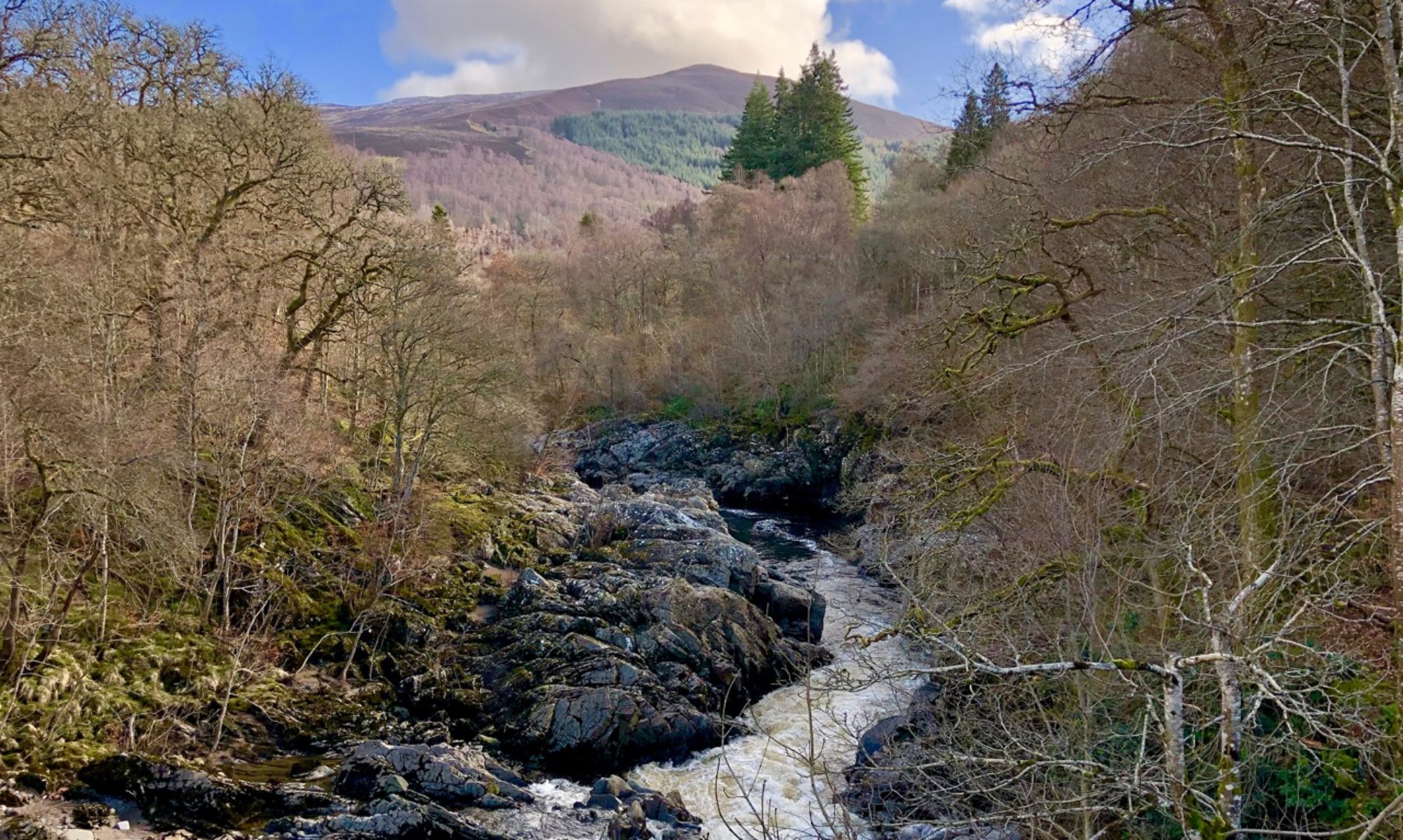“Oft had he viewed, as morning rose, the bosom of the lonely Lowes”. So began the Borders poet James Hogg when writing of the Loch of the Lowes in his poem The Queen’s Wake. The busy road passing by may have rendered it significantly less lonely than in Hogg’s day, but a short walk into the Ettrick hills provides an opportunity to capture the sense of solitude of a bygone age.
Distance: 5 miles
Time: 2 ½ hours

This walk starts at the parking area by the thin strip of land that separates the Loch of the Lowes from the larger St Mary’s Loch. Once upon a time they were part of the same loch; this natural barrier was formed over the millennia by stones washed downstream from the many burns that run out of the surrounding hills.
From the parking area, cross the bridge over the stream that connects the two lochs and head past Tibbie Shiel’s Inn. Though unremarkable in appearance, this was once an inn run by the young widow Isabella “Tibbie” Shiel from 1824 to 1878. Notable guests included Borders literary sons James Hogg and Sir Walter Scott, Thomas Carlyle, Robert Louis Stevenson and William Wordsworth.

Continue along the track signed “Captain’s Road”. This forms part of an old drove road through the hills to Ettrick, and provides a sturdy route onward as it winds its way into the hills. The land around is used for grazing sheep and cattle which may stray onto the path, so dogs should be kept on leads at this point.
Shortly after passing through a gate at a sign for Berrybush woods, the path swings to the right. Continue on this until you reach a signpost where the path bends left. Leave the Captain’s Road here and follow the sign marked “Southern Upland Way to Scabcleugh”. This soon reaches open hillside and provides magnificent views towards the peaceful valley beyond.

The path is fairly clear as it rounds Earl’s Hill and gently descends towards the Whithope burn. After crossing a small wooden footbridge, you will arrive at Riskinhope hope. Once home to a shepherd’s family, this sheltered ruin provides a stark reminder of times gone by. Without the access roads of today, this would have been a remote and lonely place to call home.

Continue uphill from Riskinhope hope as the path climbs onto Pikestone Rig. This flat ridge marks the highest point of the walk. Just before the Southern Upland Way begins its descent into the Ettrick Valley, you will find two marker posts in quick succession. Leave the Southern Upland Way at this point and take the faint path to your right, heading downhill on the other side of the ridge.

From this point the path can be quite boggy in places – perhaps explaining why the hill ahead is known as Peat Hill. The Loch of the Lowes appears before you to guide your way, so continue high above the Riskinhope burn. It was here that I met the only other soul I encountered – a shepherd on a quad bike herding his flock.

Before you reach Riskinhope farm below, you will reach a fork in the path. Head to the right, at which point the path becomes harder still to locate, to be rewarded with views across both the Loch of the Lowes and the larger St Mary’s Loch beyond.

Progress slowly downhill along the side of the loch until you reach a deep gouge in the hillside caused by a burn. Descend here to arrive at the loch’s edge. From here, head to the right and follow the path along the edge of the loch towards the bridge at Tibbie Shiel’s once more.

Ahead, above the parking area, stands a statue of James Hogg, the Ettrick Shepherd, that overlooks the two lochs. Described by Wordsworth as “undoubtedly a man of original genius, but of coarse manners and low and offensive opinions”, Hogg was admired in his day for overcoming the adversity of his upbringing to become one of Scotland’s foremost writers. Born on a small farm in nearby Ettrick, he spent much of his life in the area and was greatly influenced by the natural beauty of his surroundings. After this walk, it’s easy to understand why.


